[ad_1]
A sign for the European Central Bank (ECB) outside the bank’s headquarters in Frankfurt, Germany, on Thursday, Feb. 2, 2023.
Alex Kraus | Bloomberg | Getty Images
European Central Bank policymakers are reconsidering the path of interest rate hikes in light of last month’s banking turmoil, but remain committed to reining in core inflation.
Contagion fears set in motion by the collapse of U.S.-based Silicon Valley Bank in early March led to the downfall of several other regional lenders stateside, and culminated in the emergency rescue of Credit Suisse by fellow Swiss giant UBS in Europe.
Though panic at the time led to a flight of investors and depositors from the global banking sector, the market has since calmed amid a consensus that the bank failures were the result of idiosyncratic frailties in business models, rather than a systemic issue.
The ECB hiked rates by 50 basis points in mid-March at the height of the banking turmoil, despite some calls for the central bank to pause.
However this week, several Governing Council members noted the risk of a knock-on economic impact as interest rates continue to rise in an effort to tackle inflation.
Headline inflation in the euro zone dropped significantly in March to an annual 6.9%, largely as a result of falling energy prices. However core inflation — which excludes volatile energy, food, alcohol and tobacco prices — rose to an all-time high of 5.7%.
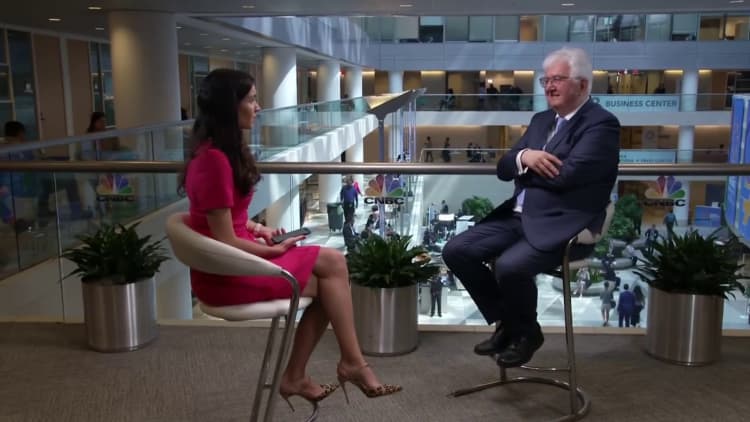
The events of the past month have caused some ECB policymakers — such as Austrian National Bank Governor Robert Holzmann — to rethink.
He had previously suggested that the ECB’s Governing Council may need to consider as many as four further rate hikes, starting with a 50 basis point increase at its next meeting in May.
But he told CNBC on Thursday that “things have changed” since those comments two months ago, and that the central bank will need to assess the situation more closely beyond the next meeting.
“Quite definitely what we experienced with the bank crisis in the U.S. and with Switzerland, this led to changes in outlook and if the outlook changes, we have to change our views,” Holzmann told CNBC’s Joumanna Bercetche at the IMF Spring Meetings in Washington, D.C.
He added that the persistence of core inflation still needs to be taken into account, but it is “not the only part” that matters, with financial conditions tightening notably and access to credit diminishing for households and businesses.
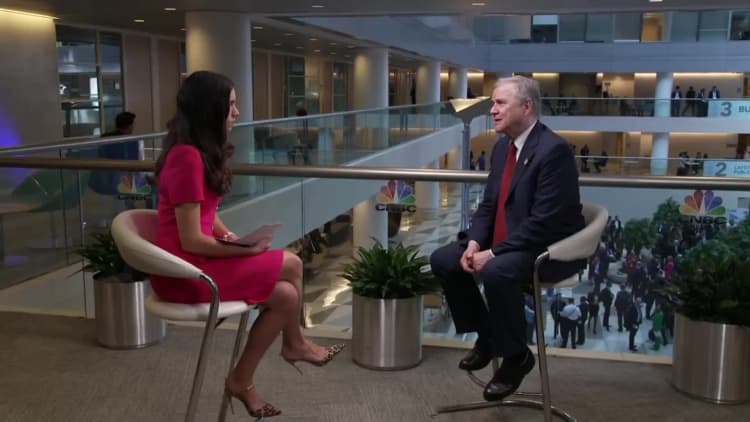
“What matters also is the situation in the financial markets. If the situation in financial markets firms up, becomes more difficult for households and enterprises to take credit, this needs to be taken into account. By how much [rates must rise] depends very much what the environment at this time tells us.”
This cautious tone was echoed by fellow Governing Council member Ignazio Visco.
The Bank of Italy governor said financial turbulence — although yet to be felt in the euro zone, where banks are mostly well capitalized and have ample liquidity — was one of several factors adding downside risk to the economic outlook.
“The Italian banking sector is doing okay, the European banking sector is doing okay, in terms of the turbulence we have seen — it is mostly related to business models of the particular banks that have been affected,” Visco said.
“This is an idiosyncrasy, but there might be contagions for other reasons. Social media works in ways that are very difficult for us now to understand.”
Core inflation concerns
Visco called for patience in assessing the ECB’s rate hike trajectory, especially since credit conditions have “substantially tightened.” But he said policymakers will be examining the data for signs that core inflation is coming down and the bank’s medium-term inflation target of 2% is within sight.
“As a matter of fact, if you look at credit data, they show that the rate of growth has gone from over 10% in the late summer to zero, and negative in real terms now, so we are tightening. We have to wait for the lags that monetary policy takes,” he said, suggesting that it could take between a year and 18 months for recent policy moves to feed through to the euro zone economy.
Other ECB Governing Council members were unanimous in identifying core inflation as a key metric for the ECB in determining the pace of rate hikes, and the stage at which it can afford to come off the brakes.
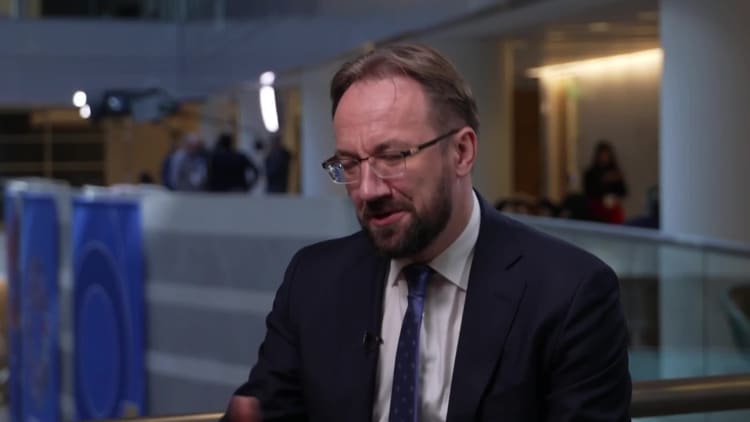
Gediminas Šimkus, chair of the Bank of Lithuania, said the apparent stickiness of core inflation is a major concern, and called for “bold actions.”
“We need these actions in July, in September, we need to continue, and that’s my approach. We need to make decisions now for us to avoid even stronger decisions in the future,” he said, adding that 75 basis point hikes should be on the table, depending on the data.
Edward Scicluna, governor of the Central Bank of Malta, also said there is “still some way to go” for the ECB in its grapple with price increases.
“We can’t do anything about energy prices but we are very upset to see that inflation starts de-anchoring, that wage earners would say ‘oh we don’t believe that it’s coming down so we’ll ask for wage increases.’ The same for firms. So yes we are worried about the core inflation not yet peaking,” Scicluna said.
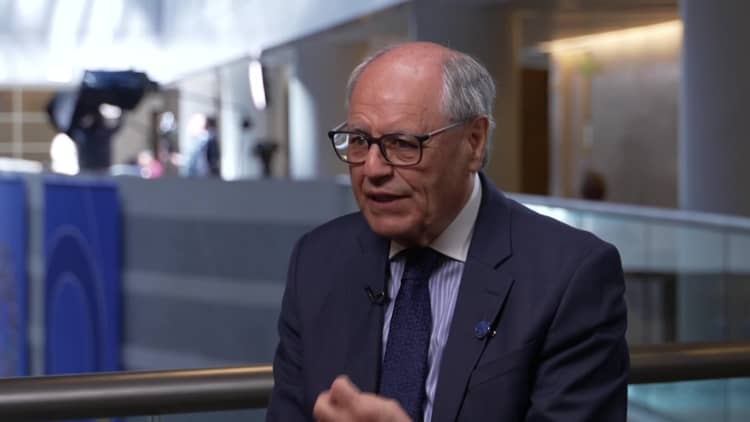
He added that the size of any future rate hikes will be difficult to predict given economic developments, including concerns around the banking system, but suggested that the fact that discussions about pausing or slowing are happening is an indication that policy rates are nearing their peak.
“It becomes more and more difficult each time. That’s a good sign that the end of the tunnel is not that far,” he said.
‘Not out of the woods yet’
Bank of Latvia Governor Mārtiņš Kazāks highlighted this on Thursday, noting that the 20-member bloc is “clearly not out of the woods yet” and that the risk of recession is “non-trivial.”
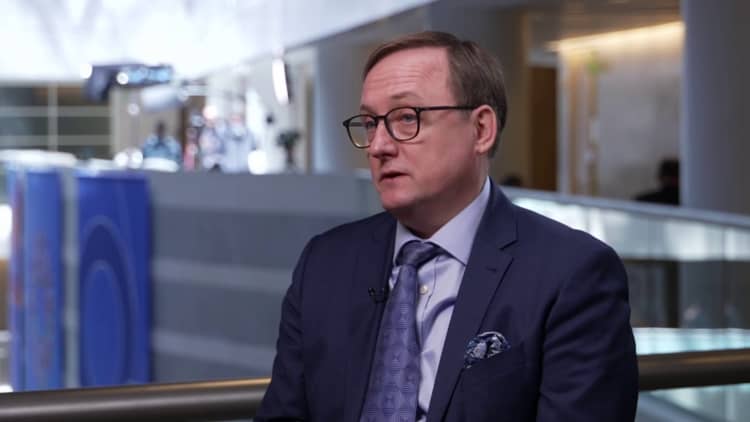
“Inflation still remains high. There are risks of some financial instability — so far, so good in Europe, and there is some reason to be confident about it, but we have to follow the situation,” he told CNBC.
“Yet we also see that the labor markets have been very strong, much stronger than expected, which leads to the situation that the rates will need to go up more to tame the inflation problem, and that may have some implications for the pockets of vulnerability that we’ve seen in certain market segments playing out as well.”
Asked about balancing the need to control inflation with the risk of overtightening and exerting further downward pressure on growth, Kazāks called for policymakers to remain focused on the inflation mandate, and said he did not see “any reason to slow down any time soon.”
“The risk of not doing enough in terms of raising rates, in my view, is significantly higher than doing too much,” he said.
[ad_2]

